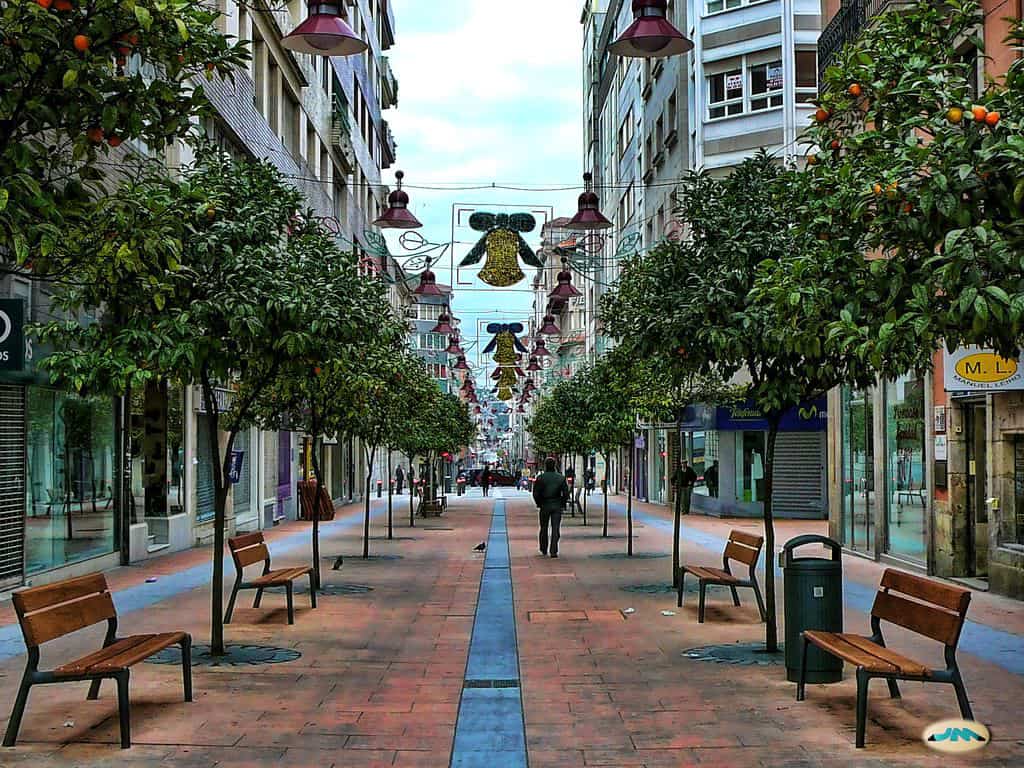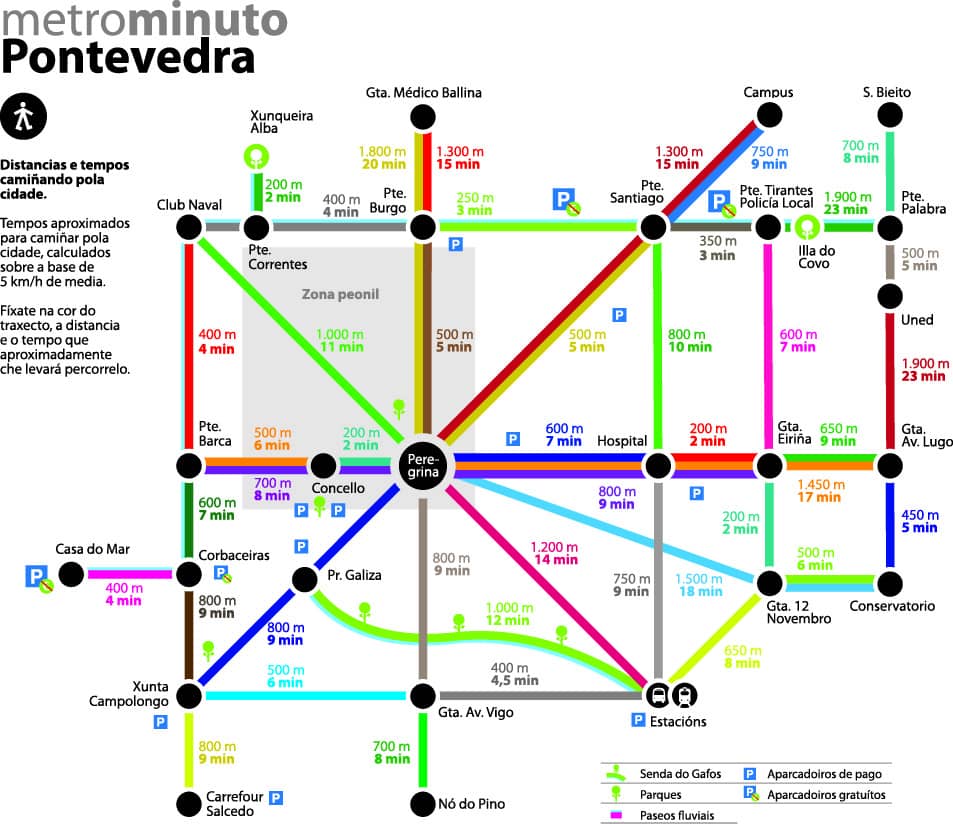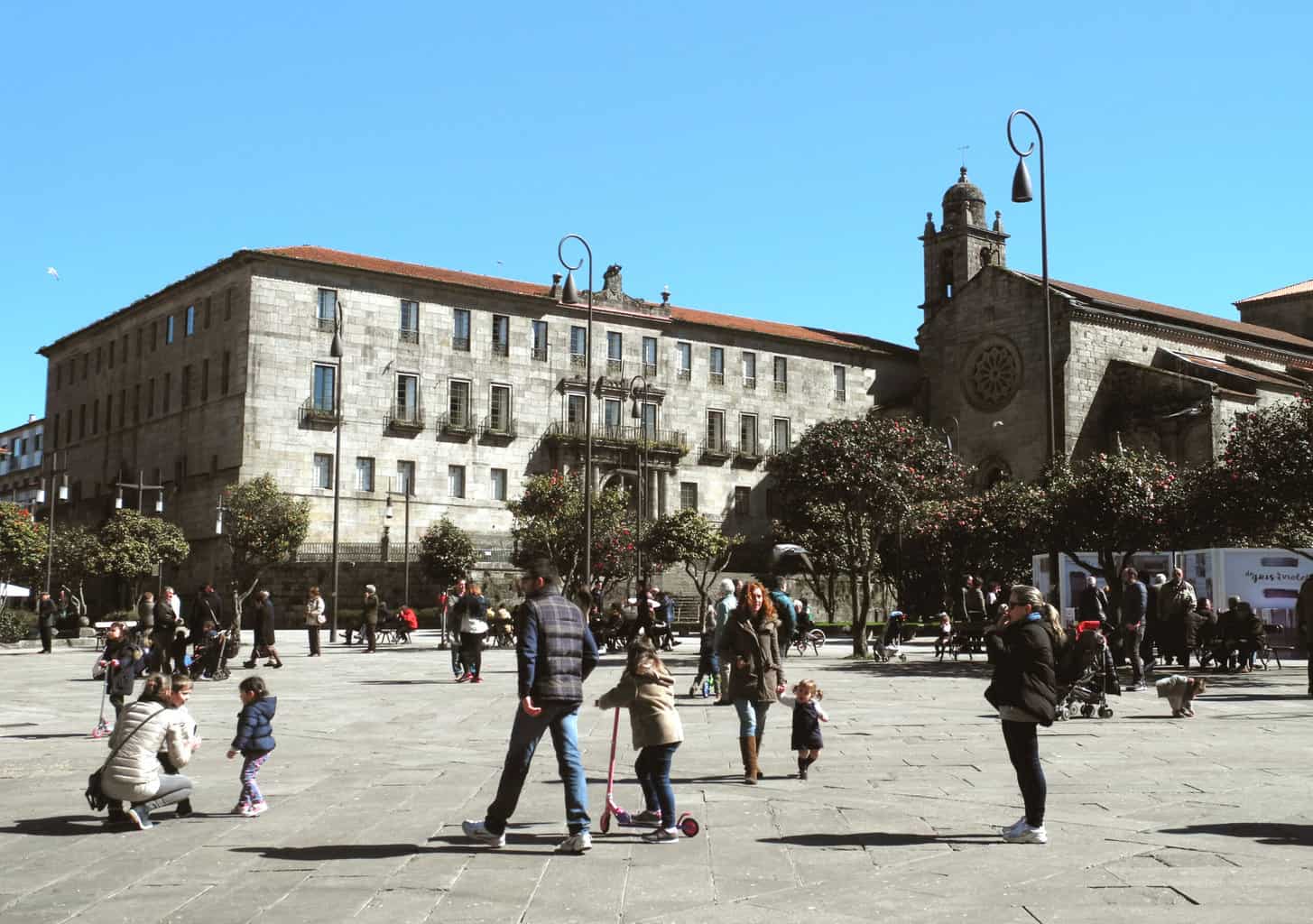
[Panorama Sustainable Cities] #5 Pontevedra, the car-free city
4 minutes of reading
in partnership with


The city of Pontevedra has adopted a mobility strategy that has brought the use of cars down to the bare minimum. As a result, traffic and pollution levels have dropped dramatically, inhabitants enjoy a new sense of well-being, and the city centre has been given an economic boost.

Pontevedra is a medium-sized Spanish town of just over 80,000 inhabitants located in Galicia, northwestern Spain. At first glance, this city – the size of Poitiers, Avignon, or Dunkirk – may seem unremarkable. But when it comes to mobility, Pontevedra takes centre stage.
It has indeed become famous for its achievements since adopting a radical new mobility policy twenty years ago, focused on slashing the presence of motorised vehicles. The goal was to promote more sustainable and people-friendly mobility. It was when Miguel Anxo Fernández Lores joined the Town Hall in 1999 that the idea was born, and it developed from then on. Quite simply, Pontevedra decided to phase out cars from its city centre, as part of a larger sustainable mobility plan.
Led by the Municipality, the strategy turned into a genuine community initiative. The idea was to reclaim the urban space that, over the years, had been increasingly dominated by cars, and give it back to the people of Pontevedra. It’s now often hailed as a shining example of success in creating a more sustainable and livable urban environment. And Miguel Anxo Fernández Lores has been repeatedly re-elected ever since. He is currently serving his sixth term as mayor of the city.

 Crédits : LBM1948
Crédits : LBM1948
A policy that, though strict, was implemented gradually
In the 90s, the city was completely car-choked as it lies right at the crossroads of two major roads passing through Galicia. Every day, up to 28,000 vehicles would drive through the historic centre’s main square. The first measure was therefore to pedestrianise a section of these two major roads as well as the historic centre itself. The flow of traffic was also re-designed, with the establishment of one-way circuits. This happened three months after the 1999 election, fulfilling a promise made during the campaign. Another of the first pillars of this strategy was to change the order in which modes of transport were prioritised. The order of importance was therefore redefined in 2002, with the publication of the very first mobility decree, whereby natural means of transportation are prioritised over motorised ones. Pedestrians now have priority over cyclists, who have priority over public transport, while motorised vehicles are last in line. In 2010, a few years after this decree was published, the municipality took things a step further by lowering the speed limit to 30 km/h on all streets in the city, regardless of street size. Eventually, in 2012, this was extended to some of the municipal streets lying outside the city centre itself. As a matter of fact, the speed limit on several streets has been brought right down to 20 or even 10 km/h.War on parking
It’s important to point out that, strictly speaking, Pontevedra is not actually car-free. Some vehicles are allowed to enter the historic city centre, such as emergency services, postal workers, residents, and delivery vehicles. But they must respect the strict rule of advancing at walking pace. Though these restrictions are indeed severe, they still allow for some motorised mobility, the necessary minimum for the city to work properly. So, the strategy does not quite demand an outright ban on vehicles, and that makes a big difference. Another of its key measures was to remove as many of the city’s parking spaces as possible. With this in view, the municipality opted to build a dozen large free car parks at the entrance to the city, and to charge for those located in the city itself. To top it off, parking was banned in the historic centre. A few parking spaces have been kept here and there, but with a firm restriction: Maximum 15 minutes of parking, with regular police checks using number plate scanners and cameras. And there’s a €200 fine for those who go over the time limit or park in prohibited areas (reduced to 100 euros if paid on the spot). These efforts to change parking habits have proven to be the most effective measure in successfully reducing traffic, as car users are forced to park outside the city when unable to find parking spaces. And, considering that 20% of city traffic is in fact generated by people looking for parking spaces, this was definitely a most effective way to tackle the problem. And the locals have been getting used to it: the number of fines handed out by local police has halved since it all started 20 years ago.
The “Metrominutos” map
Tangible results and recovered sense of well-being
Over the course of twenty years, 90% of car traffic has been removed. The number of residents using cars for trips inside the city has dropped by 67% compared to 1997, according to an analysis report published in 2017 by the Municipality. Almost 70% of trips are now made on foot or by bike. In support of this, the city drew up an isochrone map, showing travel times and distances. This map, called “Metrominutos”, is also seen as a fun tool to promote walking. Meanwhile, pollution levels have dropped in direct proportion: 61% less CO2, noise pollution has vanished from the historic centre, and road safety has significantly improved: no deaths on the road for the last ten years. What’s more, the Municipality backed up these new regulations with a dramatic transformation of the urban landscape, aimed at giving the public space back to residents. In the very centre of the city, pavements have been removed to create a more pedestrian-friendly environment, while in the rest of the city, they’ve been widened. Benches have been installed, along with green spaces and playgrounds. The streets have thus been returned to children and pedestrians. The approach has even had a positive impact on the local economy, giving businesses in the centre a boost, as the number of visitors to shops has increased significantly. The pedestrian zone helped to revitalise the neighbourhood. Additionally, in a firm move to support local businesses, the Town Hall prohibited the new construction of large shopping malls in the city. Such a change in mindset is not something that happens overnight. These profound changes in the urban tapestry had to be carefully driven. But it seems the gentle, gradual, approach has worked, with a strategy implemented step by step. Because, for many years now, the city has been reaping its rewards. Pontevedra has won several international awards recognizing its urban mobility policy and quality of life: the European Intermodes Award in 2013 in Brussels, the Urban Excellence Award from the Center for Active Design in 2015 in New York, the first prize for urban road safety at the European Mobility Week Awards 2019, and finally, the first prize for urban safety in an urban environment from the European Commission in 2020. The new approach was soon followed by a demographic shift. Since the 90s, when the population was leaving the city, the trend has been reversed: from 2001 to 2016, the city gained 10,000 inhabitants.More reading
Read also




What lies ahead? 7 megatrends and their influence on construction, real estate and urban development
Article
20 minutes of reading


